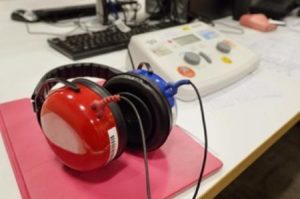 It is important to understand how occupational hearing loss can occur and how it can be prevented. Occupational hearing loss can occur when you are exposed to loud noise or ototoxic chemicals while at work.
It is important to understand how occupational hearing loss can occur and how it can be prevented. Occupational hearing loss can occur when you are exposed to loud noise or ototoxic chemicals while at work.
Noise is considered loud (hazardous) when it reaches 85 A-weighted decibels (dBA) or higher. A-weighted decibels are on a scale for measuring noise. Hazardous noise can cause both hearing loss and tinnitus. Tinnitus is an annoying buzzing, rushing, or ringing noise in your ears or in your head.
Exposure to certain chemicals can cause damage to different parts of the ear, meaning they are ototoxic. Exposure to ototoxic chemicals can cause hearing loss and make the ears more sensitive to the harmful effects of noise.
Examples of Chemicals That Damage Hearing:
- Solvents (e.g., toluene, styrene, xylene, ethylbenzene, and trichloroethylene);
- Metals and compounds (e.g., mercury compounds, lead, and organic tin compounds);
- Asphyxiants (e.g., carbon monoxide, hydrogen cyanide and its salts, and tobacco smoke);
- Nitriles (e.g., 3-butenenitrile, cis-2-pentenenitrile, and acrylonitrile);
- Pharmaceuticals (e.g., certain antineoplastic drugs); and
- Pesticides.
PROTECT YOUR HEARING, IT IS A SOUND INVESTMENT!
Download flyer: STOTW_1120_Noise-and-Occupational-Hearing-Loss Download Spanish flyer: STOTW_1120_Noise-and-Occupational-Hearing-Loss_esp

